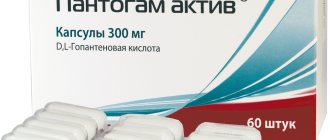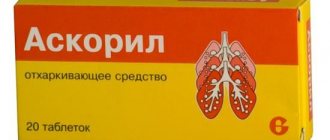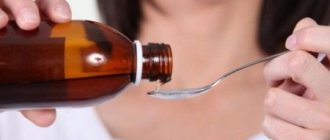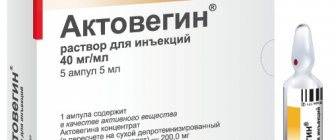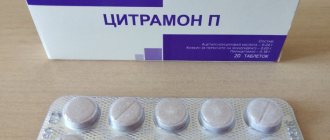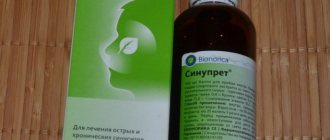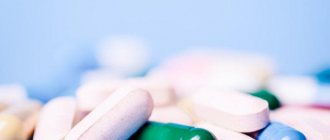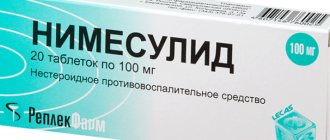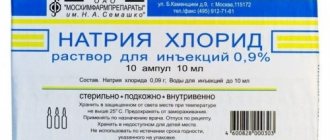Recommended doses and duration of taking tablets
The use of "Biseptol 480" in tablets is indicated for adults and children over twelve years of age in the following daily dose:
- in the normal course of the disease and chronic pathology - 960 mg, divided into two doses;
- for severe cases – 1,440 mg, and the multiplicity increases to three.
The minimum course is four days. After the signs of the disease disappear, continue to take the pills for another two days. For chronic infections, the duration of therapy is determined by the attending doctor.
Below are the daily doses and course intake of Biseptol for the treatment of some serious anomalies:
- Gonorrhea – 1,920–2,880 mg. This dose is divided into three doses.
- Gonorrheal pharyngitis – 4,320 mg. Take once a day for five days.
- Pneumonia caused by Pneumocystis carinii - the dose is calculated at 120 mg per kilogram of the patient’s weight. Take every six hours for fourteen days in a row.
- For prophylactic purposes for urinary tract infections - 480 mg at a time for adults and children over twelve years of age. For children under this age, the dose is determined as follows: 12 mg multiplied by the baby’s weight. The duration of treatment is from three months to a year.
- Acute cystitis in children from seven to sixteen years old - 960 mg twice a day, taken for three days.
Where does false information come from?
As you know, the progenitor of all modern penicillins and the symbol of the beginning of a new era in medicine was benzylpenicillin, secreted by the fungus Penicillium notatum. For centuries, the bactericidal and bacteriostatic effects of mold fungi products have been used purely intuitively (for example, applying moldy bread to wounds in Ancient Egypt). Scientific justification for such methods was given only at the beginning of the last century, when Alexander Fleming made his revolutionary discovery.
Having learned about the ability of some microorganisms to destroy others, scientists around the world began to study the properties of various bacteria and fungi. For example, in 1952, research on the actinomycete Streptomyces erythreus led to the production of the first macrolide (erythromycin), and two years earlier, the polyene fungicide nystatin was isolated from the soil bacterium Streptomyces nourse, which today is of great importance in the treatment of candidiasis. As a rule, the waste products of microorganisms were purified and stabilized, and then put into mass production (hence the corresponding name in the classification - natural).
Later, experiments began to be carried out to change the chemical structure of already known compounds. This was caused not only by the curiosity of researchers, but also by vital necessity: pathogens began to mutate and form resistance to drugs. As a result, new generations of antibacterial agents with a wider spectrum of action and specific mechanisms for overcoming protection, called semi-synthetic, have emerged.
For example, the widespread Staphylococcus aureus (strains of which cause persistent nosocomial infections) produces beta-lactamase, which destroys penicillin. The addition of a beta-lactam ring to the chemical formula made it possible to make more stable drugs (oxacillin and other derivatives). To date, all original antibiotics have undergone modifications, since pathogenic microorganisms are constantly changing and adapting.
For a long time, it was the method of preparation that determined whether a drug belonged to antibiotics. Since sulfonamides (like nitrofurans) are completely synthetic substances, until recently the answer to the question of whether Biseptol is an antibiotic was strictly negative.
Already today, established views have been revised, and all drugs that were previously called simply “antimicrobial” were included in the rest of the antimicrobial drugs and included in the classification. And since many authors use old publications and unverified information when compiling popular science articles, there is still a misconception.
The principle of separation by production method is all the more irrelevant since many modern “natural” drugs (for example, chloramphenicol) are obtained exclusively by biosynthesis.
Read further: Find out everything about the modern classification of antibiotics
When is Biseptol indicated?
The spectrum of influence of this representative of sulfonamides is quite wide:
- gram-positive and gram-negative bacteria;
- toxoplasma;
- streptococci and staphylococci;
- protozoan microorganisms;
- toxoplasma;
- coli;
- pathogenic fungi.
In this regard, the range of diseases for which a doctor can prescribe Biseptol will also be wide:
- respiratory diseases: tonsillitis, pharyngitis, tonsillitis, bronchitis, sinusitis, tracheitis and others;
- infectious diseases of the urinary tract;
- gastrointestinal diseases (typhoid fever, paratyphoid fever, diarrhea and others).
The desire of many people to use Biseptol to treat colds and acute respiratory viral infections is not always advisable, since these diseases are caused by viruses that are not sensitive to antibacterial drugs.
But for sore throat or bacterial complications after viral diseases of the ENT and respiratory organs, the use of the drug is completely justified. In these and other cases, the question arises of how to take Biseptol and what the dosages will be.
For children from 2 months to 5 years, a suspension is used - 240 mg 2 times a day. If the child can take tablets, then 2 tablets 2 times a day with a dosage of 120 mg are recommended.
Children over 6 years old can be given tablets with a dosage of 480 mg 2 times a day. For adolescents over 12 years of age and adults, the recommended dose is 960 mg 2 times a day. Treatment should last for at least 5 days and no more than 2 weeks. If you complete therapy before the time specified by the doctor, there is a risk of the most resistant microorganisms surviving and the disease becoming chronic.
It is quite natural to prescribe biseptol for cystitis. Most cases of this disease are caused by E. coli. However, you should not try to cure any pain in the genitourinary system with this medicine. Most often, fluoroquinolone drugs are prescribed for cystitis. Unjustified use of Biseptol for cystitis can lead to the survival of some microorganisms, as a result of which the disease becomes chronic.
Biseptol should only be given to children under the supervision of a doctor. Most parents do not even have a clear idea of what Biseptol is and what it helps with. If you treat babies with it uncontrollably, you can only do harm. The earliest age when children can be given biseptol is from 6 weeks.
When taking medication, you must remember the following rules:
- The medicine must be taken strictly every 12 hours;
- take the drug after meals;
- maintain the minimum course of treatment - 5 days.
Biseptol for sore throat
Most often, sore throat is caused by streptococci and staphylococci.
And, despite the fact that the annotation for Biseptol states that both of these pathogens are sensitive to the action of Biseptol, and it is recommended for the treatment of tonsillitis (tonsillitis), in recent years it has been rarely used. This is due to the fact that studies in recent years indicate a loss of sensitivity of streptococci to Biseptol. Biseptol for sore throat is now prescribed in cases where it is impossible for any reason to take first-choice medications, antibiotics. In such cases, Biseptol is prescribed in the usual age dosage for 7-10 days.
Pharmacological properties
Pharmacodynamics
Biseptol 480 contains sulfamethoxazole, which has a medium duration of action and inhibits the synthesis of folic acid through competitive antagonism with PABA (para-aminobenzoic acid), producing a bacteriostatic effect. The second active component of the drug (trimethoprim) inhibits bacterial dihydrofolate reductase. Depending on the conditions, it has a bacteriostatic or bactericidal effect. Thus, both active substances block two stages of purine biosynthesis and the synthesis of nucleic acids, which are a necessary component for numerous pathogenic microorganisms.
Biseptol 480 has a wide spectrum of activity and has a bactericidal effect against the following bacteria: Staphylococcus spp., Salmonella spp. (including Salmonella paratyphi and Salmonella typhi), Listeria spp., Bordetella pertussis, Pasteurella spp., Citrobacter, Streptococcus spp. (including Streptococcus pneumoniae), Nocardia asteroides, Serratia marcescens, Pneumocystis carinii, Neisseria gonorrhoeae, Neisseria meningitides, Enterococcus faecalis, Yersinia spp., Chlamydia spp. (including Chlamydia psittaci and Chlamydia trachomatis), Escherichia coli (including enterotoxigenic strains), Klebsiella spp., Shigella spp., Vibrio cholerae, Francisella tularensis, some species of Pseudomonas (except Pseudomonas aeruginosa), Bacillus anthracis, Mycobacterium spp. (including Mycobacterium leprae), Brucella spp., Providencia, Haemophilus influenzae (including ampicillin-resistant strains), Enterobacter spp., Morganella spp., Proteus spp., Legionella pneumophila.
In addition, some protozoa (Toxoplasma gondii and Plasmodium spp.) and pathogenic fungi (Coccidioides immitis, Leishmania spp., Actinomyces israelii and Histoplasma capsulatum) are sensitive to the drug.
Pseudomonas aeruginosa, Treponema spp., Corynebacterium spp., Leptospira spp., Mycobacterium tuberculosis and viruses are resistant to Biseptol 480.
Pharmacokinetics
The maximum concentrations of trimethoprim and sulfamethoxazole in the blood plasma, observed 1 hour after administration of the drug, are achieved faster and are higher with intravenous administration of Biseptol 480 (compared to the concentrations obtained with oral administration of the drug).
Trimethoprim is a weak alkali with lipophilic properties. Its concentration in tissues, especially in the kidneys and lungs, is higher than in blood plasma. High concentrations of the substance are also observed in bile, sputum, prostate tissues and fluids, and vaginal secretions. The content of trimethoprim in cerebrospinal fluid, synovial fluid, middle ear secretion, interstitial fluid and breast milk corresponds to the concentrations that are necessary for the antibacterial properties of Biseptol 480. Trimethoprim penetrates into fetal tissue and amniotic fluid, and its level is close to the content of the drug in maternal serum.
About 50% of trimethoprim is bound to plasma proteins. In patients with normal renal function, the half-life of the drug is 8.6–17 hours. In elderly patients, no significant deviation from the average is observed. Approximately 50% of trimethoprim is excreted unchanged by the kidneys (within 24 hours). Several metabolites are detected in urine.
Sulfamethoxazole is a weak acid. In cerebrospinal fluid, sputum, interstitial fluid, bile, synovial fluid, middle ear secretions and amniotic fluid, the concentration of active sulfamethoxazole is 20–50% of the concentration of the substance contained in the blood plasma.
About 66% of sulfamethoxazole is bound to plasma proteins. The half-life (T1/2) in patients with normal renal function is 9–11 hours. In case of impaired renal function (creatinine clearance less than 25 ml/min), an increase in T1/2 of the main acetylated metabolite of sulfamethoxazole is observed. Excretion is carried out by the kidneys. From 15 to 30% of the administered dose is determined in the urine in the form of active sulfamethoxazole. In elderly patients, renal clearance of the substance is reduced.
Characteristics of the drug
Biseptol tablets are a combination drug characterized by a wide spectrum of action. It contains sulfamethoxazole, which disrupts the synthesis of the acid necessary for the development of bacteria, as well as trimethoprim, a substance that enhances the effect of the first active component and prevents the proliferation of pathogenic microorganisms.
Biseptol is effective in many pathologies, the effect appears quickly - on the second day of treatment there is an improvement in the condition
This medication is active against pathogens such as:
Note! Biseptol does not act on viruses, so it is not used to treat viral diseases. The drug is also not active against the pathogens of tuberculosis and leptospirosis, Pseudomonas aeruginosa, and spirochetes.
This medication is produced not only in the form of tablets - Biseptol suspension, syrup and ampoules containing concentrate are also available. Biseptol suspension is suitable for children; the drug contained in the ampoules is used exclusively during inpatient treatment under the supervision of medical personnel.
Tablets and other forms of medication are quickly absorbed from the stomach, and their active components have the ability to penetrate the tissues and biological fluids of the body - the kidneys, tonsils, lungs, bronchial secretions, and cerebrospinal fluid.
The maximum concentration of the active components of the drug in the blood is observed 60 minutes after taking it.
Concentrate for the preparation of solution for infusion
One ampoule of this dosage form of Biseptol contains 80 mg of trimethoprim and 400 mg of sulfamethoxazole. Among the auxiliary substances it contains:
- sodium hydroxide and disulfite;
- benzyl and ethyl alcohol;
- propylene glycol;
- water for injections.
The total volume is five milliliters. The medicine in this form is recommended when oral administration is not possible. Let's take a closer look at how to take Biseptol in the form of a concentrate. Due to the fact that it is administered only intravenously, it should be diluted immediately before use. The following solutions for infusion can be used as a solvent: 0.9% sodium chloride, 5 and 10% dextrose, Ringer's. There are several breeding schemes:
- one ampoule of the drug is dissolved in 125 ml;
- two – in 250 ml;
- three - in 500 ml.
The prepared solution must not be mixed with other medications or used with solvents other than those listed above. The duration of administration is from sixty to ninety minutes. In cases where the individual is prohibited from administering a large amount of fluid, the use of a higher confinement is permitted. In this case, the ampoule is dissolved in 75 ml of 5% dextrose.
How to take Biseptol for acute infections? Before administration, the medication is diluted as described above and administered every twelve hours:
- 2.5 ml – from three to five years;
- 5 ml – from six to twelve years.
- 10 ml – children over 12 years old and adults.
For particularly severe infections, it is allowed to increase the dose in all age groups by fifty percent. The minimum course of treatment is five days.
Overdose
If the recommended therapeutic dose is significantly exceeded, symptoms of acute poisoning develop - nausea, vomiting, abdominal pain, headache, disturbances of consciousness. In this case, you should stop taking the drug and seek medical help.
Detoxification therapy includes gastric lavage, intestinal lavage and symptomatic therapy. Chronic overdose can lead to suppression of hematopoiesis with a significant decrease in the number of all blood cells.
Liquid dosage form
The active ingredients in this release form are also sulfamethoxazole and trimethoprim. By enhancing each other’s effect, they have a detrimental effect on pathogenic bacteria, blocking their destructive effect on the child’s body. To give the taste and consistency of the syrupy mass, the following ingredients have been added to the medicine:
- maltitop;
- citric acid monohydrate;
- magnesium aluminum silicate;
- sodium hydrogen phosphate dodecahydrate;
- methyl and propyl hydroxybenzoate;
- sodium carmellose and saccharinate;
- macrogol glyceryl hydroxystearate;
- flavoring;
- purified water.
“Biseptol” in syrup is recommended for children over one year old with such ailments as:
- pyelonephritis;
- sinusitis;
- meningitis;
- tracheitis;
- cystitis;
- lung abscess;
- bronchitis;
- otitis;
- furunculosis;
- intestinal infections;
- urethritis;
- pyelonephritis;
- and others.
Before using the syrup, be sure to take into account all contraindications for its use. These include serious pathologies of the cardiovascular system and hematopoiesis, liver, kidneys, as well as individual intolerance.
Indications for use
According to the manufacturer's instructions, Biseptol is prescribed for the treatment of infectious and inflammatory diseases that are caused by microorganisms sensitive to the drug, namely:
- Gonorrhea;
- Otitis, sinusitis;
- Infections of soft tissues and skin, including pyoderma, furunculosis;
- Infections of the genitourinary system, including urethritis, pyelonephritis, prostatitis, salpingitis;
- Various respiratory tract infections, including pneumonia, bronchitis, lung abscess, pleural empyema;
- Infections of the gastrointestinal tract, including typhoid fever, typhus, bacterial cholera, dysentery, diarrhea.
Features of treatment
During the therapeutic program, it is recommended to abstain from products that contain an abundance of PABA. First of all, these are green plants. During the program, spinach, beans, and cauliflower should be excluded from the diet. Carrots and tomatoes are contraindicated for patients. It is necessary to minimize exposure to ultraviolet rays as much as possible.
The likelihood of unwanted effects increases significantly against the background of AIDS.
If the tests showed beta-hemolytic streptococcus belonging to category A, diagnoses of tonsillitis, pharyngitis (caused by group A streptococcus), Biseptol is not recommended. This type of microorganism is especially characterized by a wide distribution of resistant strains.
It is known that, under the influence of trimethoprim, it is possible to correct tests that allow assessing the content of methotrexate in the blood plasma if the studies are organized using an enzymatic method. If the radioimmunological method is chosen, the results will be stable, they do not depend on the use of Biseptol tablets.
When and how much
Containing active ingredients in an amount of 480 mg, Biseptol is intended for oral use. It is recommended to use the product after a meal. The tablets must be washed down with plenty of clean water without additives. The dosage is selected by the doctor, focusing on the diagnosis, age and weight of the patient, the presence of additional diseases and features complicating the case.
If pneumonia is diagnosed, it is necessary to calculate the drug by assessing the patient’s weight: 100 mg of sulfamethoxazole is prescribed for each kilogram. It is necessary to maintain a six-hour pause between doses of the medicine. The duration of the treatment program is two weeks.
In the case of gonorrhea, you need to use a couple of grams of sulfamethoxazole twice a day. Twelve-hour breaks are taken between doses of the drug.
Adults and children over twelve years of age can use the product twice daily in amounts up to 960 mg. If a long-term therapeutic program is planned, take 480 mg twice a day. As indicated in the description of Biseptol tablets in the instructions for use, 480 mg of the drug can be prescribed to children over six years of age. For children in the age group of three to five years, it is recommended to take 240 mg of the medicine twice daily.
Storage conditions and shelf life
Biseptol is an antibacterial medicine, the dispensing of which from pharmacies is permitted only for medical prescription. The shelf life of Biseptol tablets and Biseptol 480, subject to the necessary storage conditions, is 5 years, the suspension is 3 years.
How to take Biseptol tablets 120 and 480 mg - tips and recommendations on News4Health.ru
Life in the modern world is replete with many factors that negatively affect human health. The main ones are poor ecology, questionable quality of food, contaminated drinking water, poor quality medical care, as well as stressful situations and bad habits. Therefore, it is so important to pay attention to regular healing of the body using various methods and means. Be sure to consult a specialist so as not to harm your health!
Biseptol 480 instructions for use dosage and method
Biseptol 480 is intended for intravenous administration only. The concentrate is diluted immediately before use.
To prepare the infusion solution, the following dilution scheme is recommended:
- 5 ml of concentrate (1 ampoule) – 125 ml of solution for infusion;
- 10 ml of concentrate (2 ampoules) – 250 ml of solution for infusion;
- 15 ml of concentrate (3 ampoules) – 500 ml of solution for infusion.
The solvent you can use is: 0.9% sodium chloride solution; 5% and 10% dextrose solutions; 0.45% sodium chloride solution with 2.5% dextrose solution; Ringer's solution.
After introducing Biseptol 480 into one of the solutions listed above, you must vigorously shake the resulting mixture to ensure complete mixing. If crystals or sediment appear before mixing or during administration of the drug, the resulting solution should be destroyed and a new one prepared.
Depending on the degree of hydration of the patient, the duration of the infusion ranges from 60 to 90 minutes. If the patient is prohibited from administering a large amount of liquid, it is possible to use a solution of a higher concentration - 5 ml of the drug in 75 ml of 5% dextrose. The remaining (unused) dilution must be discarded.
Recommended dosage for the treatment of acute infections:
- children aged 3–5 years: 2.5 ml of infusion solution every 12 hours;
- children aged 6–12 years: 5 ml of infusion solution every 12 hours;
- children over 12 years of age and adult patients: 10 ml (2 ampoules) every 12 hours.
The dose of Biseptol 480 for children aged 3–12 years is determined at the rate of 6 mg of trimethoprim and 30 mg of sulfamethoxazole per 1 kg of body weight per day, divided into 2 administrations.
For severe infections, it is possible to increase the dose by 50% for all patients, regardless of age.
The course of treatment is at least 5 days or throughout the main disease and for another 2 days after the disappearance of all symptoms.
In patients with renal failure, the dose of Biseptol 480 is adjusted depending on creatinine clearance (CC):
- CC above 30 ml/min – standard dose;
- CC 15–30 ml/min – 50% of the usual dose;
- CC less than 15 ml/min – use of the drug is not recommended.
Every 2–3 days, serum concentrations of sulfamethoxazole should be determined in blood samples taken 12 hours after the infusion. At values of 150 mcg/ml and above, treatment should be suspended until the concentration of the substance decreases to less than 120 mcg/ml.
A special dosage regimen is required for the treatment of pneumonia caused by Pneumocystis jirovecii (formerly P. carinii). Biseptol 480 is prescribed at the rate of 20 mg of trimethoprim and 100 mg of sulfamethoxazole per 1 kg of body weight per day, divided into 2 or more doses. As soon as possible, the patient is transferred to the oral form of the drug. The duration of therapy should not exceed 14 days. The goal of treatment is to achieve a maximum plasma concentration of trimethoprim equal to 5 mcg/ml or more (determined in patients receiving Biseptol 480 intravenously over 60 minutes).
For the prevention of toxoplasmosis and pneumonia caused by Pneumocystis jiroveci, Biseptol 480 is taken in the usual dose (orally or intravenously in appropriate dosage forms) throughout the entire period of exposure to risk.
special instructions
Regular monitoring of the concentration of sulfamethoxazole in the blood is necessary. If the value is more than 150 mcg/ml, then treatment is stopped until the value reaches 120 mcg/ml or lower. If the course of treatment lasts a month or more, then regular monitoring of the blood condition is required.
When folic acid is prescribed, hematological changes are reversible. In patients with AIDS, side effects are more common and more pronounced. Biseptol is not recommended to be prescribed for pharyngitis and tonsillitis caused by beta-hemolytic streptococcus gr. A.
Side effects
The drug Biseptol can cause the development of side effects in the body. Damage to internal organs occurs as a result of incorrect dosage or taking medication when there are contraindications. The following systems are disrupted in the body:
- Respiratory system. Severe suffocation, spasms in the bronchi, severe cough, and pulmonary infiltration occur.
- Nervous system. The patient experiences severe headaches, dizziness, and apathy. Meningitis develops in the body, and tremors of the limbs appear. A depressive state can last for a long time.
- Organs of the gastrointestinal tract. Patients experience decreased appetite, nausea and vomiting, and development of stomatitis, gastritis, diarrhea, hepatonecrosis, abdominal pain, and glossitis. Patients are often diagnosed with acute pancreatitis or cholestasis, hepatitis, cholestatic jaundice, and pseudomembranous enterocolitis.
- Circulatory system. If used incorrectly, the medicine can cause the development of leukopenia, eosinophilia, methemoglobinemia, neutropenia, thrombocytopenia, and hemolytic anemia.
- In the urinary system, damage to internal organs occurs, which leads to polyuria, hyperproteinemia, interstitial nephritis, and impaired renal function. The patient's crystalluria progresses, and the level and concentration of urea in the body increases. Against the background of these pathologies, a toxic form of nephropathy develops, which is accompanied by anuria and oliguria.
- Musculoskeletal system. When joints and ligaments are affected, myalgia and arthralgia are provoked.
Some patients experience a severe allergic reaction during treatment with Biseptol. It is accompanied by itching, rash, drug fever, and urticaria. The patient's body temperature rises sharply, exfoliative dermatitis, scleral hyperemia, allergic myocarditis, and angioedema progress.
Contraindications and side effects
The drug is contraindicated during pregnancy, especially in the early stages, during lactation. It is not prescribed in tablet form to children under 3 years of age. Other contraindications:
- severe forms of kidney damage, renal failure;
- complex forms of anemia, other types of blood disorders;
- hyperbilirubinemia;
- intolerance, allergy to components.
Patients with a lack of vitamin B9 in the body while taking it are at high risk of developing severe anemia. Therapy is carried out with caution in case of pathologies of the thyroid gland and asthma.
The drug inhibits the growth of E. coli in the intestines, which disrupts the production of B vitamins.
More often, Biseptol is well tolerated, but side effects are still possible. Headaches, neuritis, dizziness may develop, and sometimes depression and tremors are noted. Some patients develop respiratory disorders and bronchospasm. There is also a risk of developing:
- nausea, vomiting;
- diarrhea, gastritis;
- stomatitis, glossitis;
- polyuria, crystalluria;
In the most severe and rare cases, hepatitis, pulmonary infiltrates, pancreatitis, anemia and blood disorders, nephritis are possible.
Instructions for use Biseptol method and dosage
Pills
The tablets are taken orally after meals. Take a sufficient amount of liquid. The dosage is determined by the doctor taking into account the individual indications of the patient.
- Children 3-5 years old are prescribed 240 mg 2 times a day. Children 6-12 years old - 480 mg 2 times a day.
- When treating pneumonia, the daily dose is calculated as follows: 100 mg of sulfamethoxazole per 1 kg of body weight. The drug should be taken every 6 hours. Duration of therapy is 2 weeks.
- For the treatment of gonorrhea, 2 g of sulfamethoxazole is prescribed 2 times a day with an interval of 12 hours between doses.
- Adults and children over 12 years of age take 960 mg 2 times a day. For a long course of treatment - 480 mg 2 times a day.
- The duration of therapy is from 5 to 14 days. In severe cases or chronic infections, it may be necessary to increase the single dose by 30-50%.
- If therapy lasts more than 5 days or the patient takes increased doses of the drug, monitoring of peripheral blood is necessary. In case of pathological changes, folic acid is prescribed at a dose of 5-10 mg per day.
- If a dose is missed, the drug should be taken as soon as possible. If a double dose is required, the previous dose should be skipped. Do not take a double dose to compensate for a missed dose.
- In case of renal failure (creatinine clearance 15-30 ml/min), the recommended dose is reduced by 2 times. When CC is less than 15 ml/min, the use of the drug is not recommended.
Suspension
Biseptol in the form of a suspension is taken orally after a meal with a sufficient amount of liquid.
- Adults and children over 12 years of age take 960 mg every 12 hours. For severe infections, the dose is increased to 1440 mg every 12 hours.
- The duration of therapy for urinary tract infections is 10-14 days, exacerbation of chronic bronchitis - 2 weeks, travelers' diarrhea and shigellosis - 5 days. The minimum dose is 480 mg every 12 hours. For treatment durations of more than 14 days, the minimum dose is used.
- Children from 2 months (or 6 weeks at birth from mothers with HIV infection) to 5 months take 120 mg 2 times a day. Children from 6 months to 5 years take 240 mg every 12 hours. Children 6-12 years old are prescribed 480 mg every 12 hours.
- The duration of therapy for urinary tract infections and acute otitis media is 10 days, for shigellosis – 5 days. When treating severe infections in children, doses can be doubled.
- The minimum duration of therapy for acute infections is 5 days. After the symptoms disappear, therapy should be continued for another 2 days. If there is no improvement after 2 weeks, you need to be re-examined.
- Soft chancroid - 960 mg every 12 hours. If after 7 days the skin element does not heal, you can extend the drug for another 7 days. The lack of effect may indicate resistance of the pathogen.
- For acute uncomplicated urinary tract infections in women, a single dose is 1920-2880 mg. It is recommended to take the drug in the evening after meals or before bed.
- When treating pneumonia caused by Pneumocystis carinii, 30 mg per 1 kg of body weight is prescribed 4 times a day with an interval of 6 hours. Duration of therapy is 2-3 weeks.
- For adults and children over 12 years of age, 960 mg per day is prescribed. The total daily dose for children under 12 years of age should not exceed 1920 mg. Reception is carried out for 3 consecutive days every week.
- For other bacterial infections, the dose is selected individually taking into account age, body weight, kidney function and severity of the disease. For nocardiosis, adults take 2880-3840 mg per day for at least 3 months. The course of treatment for acute brucellosis is 3-4 weeks.
Reviews
We have selected some people's reviews about the drug Biseptol:
- Olga. I consider Biseptol to be an old, reliable, proven drug that helps in solving problems not only of diseased respiratory organs, but also of ulcers, styes, and diarrhea. She successfully treated herself and her children with it. I know that it is bad for the liver, so I consumed it only after eating and drinking milk. In the battle with bronchopulmonary diseases, it is necessary to take 4 tablets per day, 2 at equal intervals for 3-5 days, depending on the severity. For ulcers, 1-2 single doses of 2 tablets are enough, and from diarrhea it saves from one dose of the same number of tablets. Wonderful drug!
- Tatiana. That's right, if dogs are treated, it means it will suit humans too. It is better to refrain from giving Biseptol to children (under 8 years old) - boys. It acts on the testicles. One of the very smart and competent therapists told me this in 1982. And in the future it can be perfectly used in treatment. Bronchitis has been treated before without the use of antibiotics. And they did a great job, and now they’re putting everyone on antibiotics. Immediately there are allergies, hormones and the process is started.
- Ruslan. Antibiotics kill microorganisms, and antimicrobial drugs are not directly fatal to them, but disrupt their metabolism, as a result of which they die. This drug, for example, disrupts the formation of folic and dihydrofolic acids among microorganisms. This distinguishes drugs from this group from antibiotics in that they do not destroy beneficial microflora as much and have fewer side effects.
- Irina. This is a very good medicine. The eldest child often suffered from a cough during the cold season, and his throat began to hurt almost every 2-3 weeks. The treatment took quite a long time. These pills helped a lot. There are small tablets for children, but my child asked to crush them and took them as a powder. They are quite bitter, but their effect on coughs is excellent. I know that even friends who suffer from bronchitis speak very highly of this drug. I myself took Biseptol for adults for coughing, which also helped. Only the size of the tablets for adults is very large.
- Edwin. I used to use Biseptol often, especially in winter, when I’m frozen, take two tablets before bed and feel refreshed in the morning. But one day a kind doctor put the evil eye on me after an operation and now I have swellings and itches. I haven’t used it for about 17 years, but I would like to go back to it, doxycycline is like a poultice for the dead.
Composition and release form
The Latin name of the drug is Biseptol. International nonproprietary name (INN) - sulfamethoxazole, trimethoprim. The drug is available in several forms, because it is prescribed not only to adults, but also to children.
The forms differ in the presence of auxiliary components and the concentration of the active substance:
| Release form | What's included |
| Suspension for internal use | Available in 80 ml bottles. Dilution is required before use. 100 ml of the drug contains 0.8 g of trimethoprim and 4.0 g of sulfamethoxazole. The medicine is sold in pharmacies with a prescription from a doctor or without a prescription. |
| Pills | Intended for adults. The composition includes 0.4 m sulfamethoxazole and 0.08 g trimethoprim. The medicine can be used to treat children, but you need to buy a different dosage - this is 0.1 g of sulfamethoxazole and 0.2 trimethoprim. The blister contains 20 tablets. |
| Concentrate for injection | 1 ml of medication contains 16 mg of trimethoprim and 80 mg of sulfamethoxazole. |
Tablets are produced in the following ratio of the main components: 100/200 and 400/80 mg. The medicine is presented in a white-yellow shade. The shape of the tablets is round, the edges are intact, there is a chamfer. The price of Biseptol in pharmacies varies from 300 to 600 rubles.
Analogues, what else should you know?
There are a number of analogues from the sulfonamide group, but replacing the drugs yourself is strictly prohibited - they can have different effects.
| A drug | Compound | Price, rubles |
| Co-trimoxazole | Co-trimoxazole | 25 |
| Sulfadimethoxine | Sulfadimethoxine | 80 |
| Sulfadimezin | Sulfadimezin | 55 |
| Sulfasalazine | Sulfasalazine | 390 |
| Sulgin | Sulfaguanidine | 120 |
The drug has poor compatibility with alcohol - the toxic effect on the liver is significantly enhanced. Allergy sufferers are treated with caution; a trial dose should be taken in a reduced dosage. You should not unnecessarily prescribe the drug to elderly patients and patients with AIDS; they have a much higher risk of developing side effects. With long-term therapy, even in the absence of changes in blood composition, folic acid must be prescribed; this does not reduce the antimicrobial activity of Biseptol.
Biseptol antibiotic or not
Opinions in various sources on this matter are diametrically opposed, however, the correct answer is “yes”.
By the way, our website offers a free service for checking whether any drug is an antibiotic. To use it, click on the gear icon stuck on the right side of the screen:
Biseptol acts bacteriostatically, that is, it inhibits the reproduction and growth of microorganisms. This happens due to the introduction of the active substance (co-trimoxazole) into the cell and blocking the synthesis of vitamin B9 - folic acid.
Like other antibiotics, this medicine only fights bacteria and is inactive against viruses. The broader concept of “antibacterial drug” directly indicates that using it to treat influenza or ARVI is pointless and even dangerous.
However, as statistical studies show, about half of the Russians surveyed mistakenly believe that antibiotic therapy is an adequate treatment for diseases of a viral nature and independently “prescribe” pills for themselves. The result of such illiteracy is the emergence of many resistant strains, severe complications and the development of superinfections that are difficult to treat (often fatal).
Use during pregnancy and lactation
During pregnancy, the drug should be prescribed only if the expected benefit from its use outweighs the possible risk to the fetus, since both trimethoprim and sulfamethoxazole cross the placental barrier and thus can affect folic acid metabolism. In late pregnancy, the use of the drug should be avoided due to the possible risk of developing kernicterus in newborns.
Due to the fact that trimethoprim and sulfamethoxazole pass into breast milk, the use of co-trimaxazole during lactation is contraindicated.
